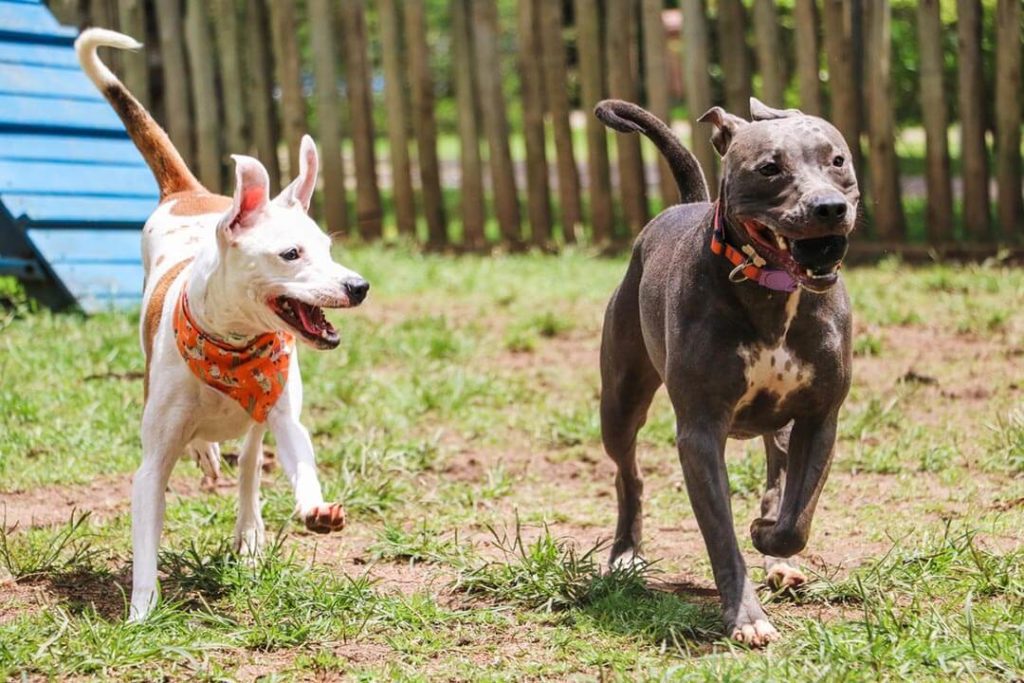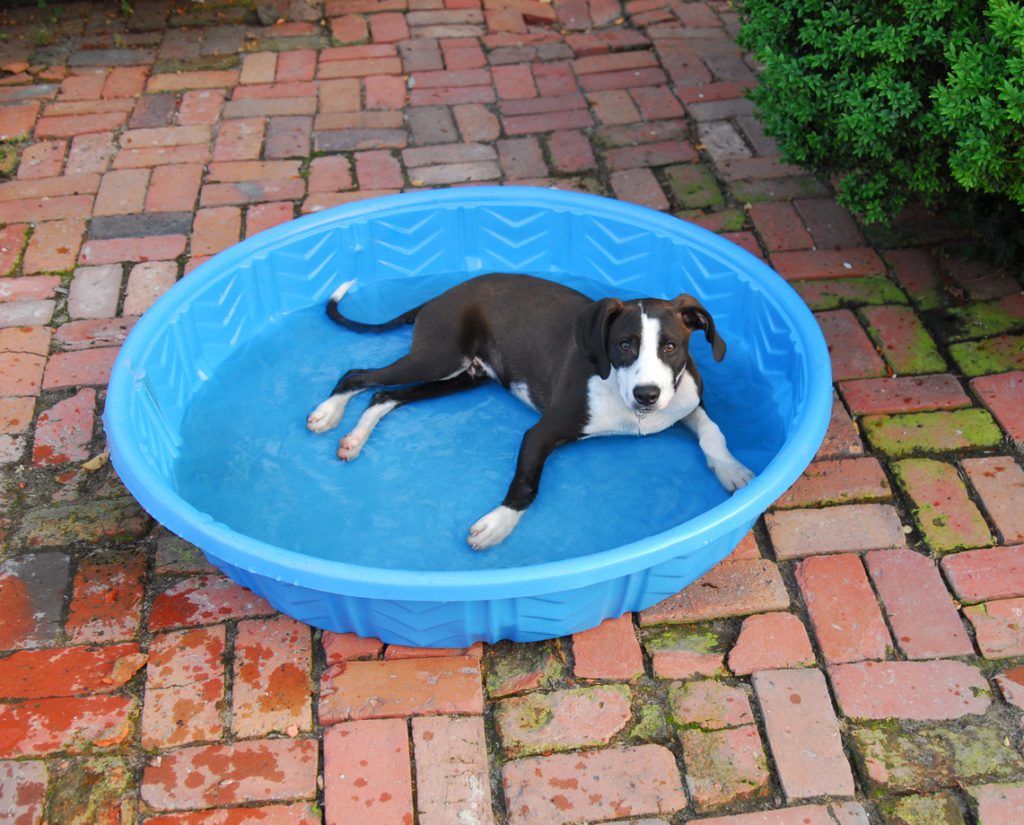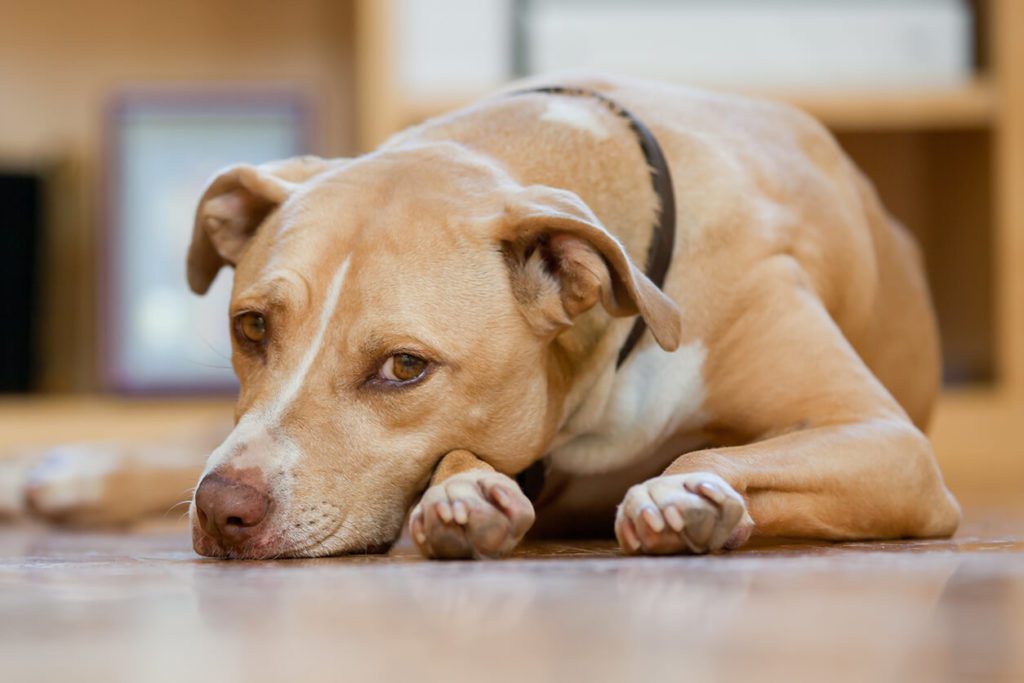Dog Overheating: Symptoms and What To Do in Pasadena, TX
Dog Overheating: Symptoms and What To Do in Pasadena, TX
Dogs are much more heat sensitive than you may realize. And some breeds are more sensitive to high temperatures than others. It doesn’t take long on a hot day for your dog to begin suffering from the heat. Dogs can’t sweat like people do. Normally, dogs release heat through panting. But once they become very hot, panting isn’t enough to dissipate the heat.
You should know what the signs of overheating are and what to do to help your dog if he becomes too hot. Your dog doesn’t know high temperatures are dangerous. If he’s having a good time, that’s what he’s focused on. Your dog can keep running and playing until he’s so hot that he has to stop. By then, he could be in serious danger. After your dog’s temperature spikes dangerously high, he can suffer organ damage, seizures, and death. Take overheating seriously, you’re dog’s life could depend on your actions if he becomes too hot.
Also, if you have a “flat face dog,” such as a pug or Boston terrier, know that they are more susceptible to overheating due to their facial structure.
This article will outline the symptoms of heat distress and what to do if your dog becomes too hot. Overheating is serious and you need to know how to recognize it and know how to help your dog.

Understand Dog Overheating
You should be aware of the different levels of overheating.
Dog Overheating Symptoms Include:
- Excessive panting
- Flat tongue
- Thick saliva
- Molars exposed with cheeks pulled back
- Increased thirst
- Slower reaction time
Dog Heat Exhaustion Signs Include:
- Fast, heavy panting
- Increase in thirst
- Dry mouth, gums and/or nose
- Sunken eyes
- Weakness
- Vomiting and/or diarrhea
Additional more serious signs (see heat stroke) can include:
- Elevated body temperature
- Excessive drooling
- Increased heartbeat and pulse
- Disorientation
- Shortness of breath
- Muscle tremors
- Rectal bleeding
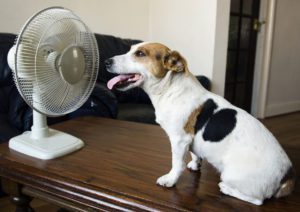
How To Avoid Dog Overheating
Know how to prevent your dog from becoming overheated.
- Make sure there’s enough cool water for your dog while he’s outside to keep him hydrated.
- Keep an eye on your dog to make sure he isn’t exhibiting any signs of heat stress.
- When it’s extremely hot outdoors, limit his activity.
- Don’t go for walks on concrete, asphalt, sand, or any other surface that reflects heat.
- Never leave your dog alone in a car, not even for a few minutes on milder days. A car can become an oven in 15 minutes or less. It isn’t safe even if the windows are cracked.
- Keep your house cooled.
- Never leave your dog in a garage or any building without ventilation and air-flow.
Factors To Be Aware Of
- Older dogs will overheat quicker than young dogs. Though puppies can also overheat quickly.
- Overweight dogs are more susceptible to heatstroke than dogs at a normal weight.
- Overexertion from play or work can cause a dog to overheat.
- Neglected dogs are at risk when they don’t have adequate water and shade to protect them from the heat.
- Long, thick, double hair coats can make a dog overheat.
- Illness will cause a dog to overheat before a healthy dog will.
- Never leave a crated dog in a poorly ventilated location.
- Acclimate your dog slowly to hot weather.
- Cool your home on hot days if you dog is home alone.
- Avoid walking your dog on concrete and asphalt.
- Spray your dog with cool water on hot days…not cold water…just cool.
- If it’s hot enough for you to sweat, your dog will have to work harder to cool himself.
What To Do If Your Dog Overheats
If your dog is overheating, this is a life threatening situation. Do the following:
- Move him to a cool pace immediately, preferably indoors with air-conditioning.
- Take his temperature. A normal temperature for a dog is 101.5 degrees Fahrenheit. Moderate overheating falls between 103 – 106 degrees. Severe overheating occurs at 106 degrees.
- Spray him with cool water. Make sure you use enough that it gets to his skin through his hair coat. Wipe his face and muzzle with cool water. You can also wet his ears and paws with cool water. Do not use cold water or ice anywhere on his body to bring his temperature down. Though it seems counterintuitive, this will cause more harm. This is because cold water constricts surface blood vessels, and this will reduce, not increase, heat loss.
- Do not wrap wet towels around him. This will trap and hold heat, not get rid of it.
- Use a fan to help cool your dog. If you don’t have a fan, fan him yourself with a big piece of cardboard or something similar to generate a good air flow.
- Offer him cold water to drink but don’t try to force him.
- Call your veterinarian immediately and follow their directions. Even if you cool him down and he’s acting normal, his organs may have already become compromised. He needs veterinary care. You might think he’s okay judging by his reactions, but he may not be. If a dog suffers heat stroke and he isn’t treated, survival is not expected.
- Note: If your dog loses consciousness, take him straight to a veterinary emergency clinic. Do not delay. Your dog is in a serious, life threatening crisis and must have immediate help if he is to survive.
Dog Heat Stroke
Heat stroke is very serious and much more common than you might know. It can happen any time of year and it can happen quickly. Dogs can die as quickly as an hour. And there have been cases of dogs dying much more quickly than an hour. You dog needs emergency care immediately if he has suffered heat stroke.
Dog heat stroke symptoms include:
- Dark or lack of urine
- Confusion or lack of response
- Uncoordinated
- Seizures
- Collapse
- Coma
- Death
Dogs predisposed to suffer heat stroke:
- The very young and very old
- Large dogs
- Very active or working dogs
- Dogs with thick or long coats
- Overweight dogs
- Dogs with heart or cardiovascular problems
- Flat-faced dog breeds
- Dogs who have become dehydrated
- Dogs with respiratory disease or other breathing problems
- Dogs with neurological disease
What Care Will Your Dog Need
Once you arrive at your veterinarian or the emergency clinic, your dog will be evaluated to determine his condition. Once the severity of the heat stroke is determined, treatment will begin.
Some of the things he may need include (not an exhaustive list…each case will need to be determined by the care providers):
- If his temperature is still high, he will need cooling
- Oxygen
- Blood tests to determine different systems that may have been damaged
- He may be treated for dehydration and shock with fluids
- Pain relief
- Antibiotics
- He may need cardiac medications
- He may require blood or plasma
- Meds for nausea and/or diarrhea may be needed
- Ongoing monitoring for appropriate treatment
Provide Safe Summer Fun
Take summer heat seriously. It isn’t the same for dogs as it is for us. Especially if you live in a region where it gets extremely hot. And keep in mind that it takes dogs much longer to acclimate to a big temperature change than it does for humans. People are much better able to manage hot weather than our fur-friends.
Look for ways to help your dog have summer fun safely. Some things you can do are:
- Get a plastic wading pool and let him play in it
- Have fun with lawn sprinklers designed for kids
- Give him frozen doggy treats
- Go swimming in a doggy swimming pool
- For extra fun, get another wading pool and put sand in it for him to dig in, hide toys in it for him to find. (You can use contractors plastic or a tarp under it to catch flying sand.)
- Fill a bucket with cool water and put dog safe fruits in it for him to dunk and grab.
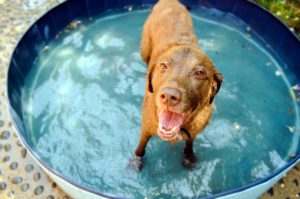
Conclusion
Always take summer heat seriously. While you may manage the heat without any problems, your dog may not be so lucky. Overheating is a serious and dangerous situation for a dog, and some dogs are already predisposed to overheat quickly. Know what to look for, and more importantly, know how to prevent overheating. While the stress and expense of treating a dog who has succumbed to the heat is bad, losing a dog is so much worse.
You can prevent problems with common sense once you understand the danger of letting your dog become too hot. Your fur-friend doesn’t know that excessive play under the summer sun could be fatal in a worst-case situation. He just knows he’s having a good time. He depends on you to make the best decisions for the both of you to enjoy summer to the fullest while keeping everyone comfortable and safe. With the right information, you and your pup will navigate the hot weather like pros.
Help your dog stay safe and happy all summer long and still have fun together with the right kind of activities. It isn’t that difficult to make summer your favorite time of year without over doing it for you or your dog.
Recent Posts
About Spencer Animal Hospital
Spencer Animal Hospital is a staple of the Pasadena community. Our veterinarians and staff have been providing high-quality, compassionate veterinary medicine since 1974. As a full-service veterinarian in Pasadena, TX, we serve dogs and cats with expert, personalized, affordable care.

